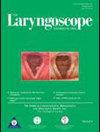Preliminary Normative Reference Values of Validated FEES Scales in Healthy Young Adults
Abstract
Objectives
Limited normative reference data are available for validated outcomes of flexible endoscopic evaluation of swallowing (FEES). We aimed to examine healthy swallowing via FEES in community-dwelling healthy adults to derive a preliminary reference dataset of normative validated FEES outcomes to guide clinical interpretation and diagnostic decision-making.
Methods
Adults with no history of dysphagia-related disease underwent simultaneous videofluoroscopy and FEES imaging using a standardized 11-item bolus protocol. Trained raters performed duplicate, independent, blinded ratings of the New Zealand Secretion Scale (NZSS), Penetration-Aspiration Scale (PAS), and Dynamic Imaging Grade of Swallowing Toxicity-FEES (DIGEST-FEES) validated scales. Descriptive statistics were performed at the bolus (PAS) and participant level (NZSS, DIGEST-FEES).
Results
361 swallows from 33 community-dwelling adults (36.6 ± 14.7 years old) were analyzed. In rank order, distribution profiles were: (1) NZSS: 95% normal (NZSS = 0), 5% abnormal (NZSS = 4); (2) Worst PAS: 73% safe (PAS 1–2, n = 24), 21% penetration above the true vocal folds (PAS 3, n = 7), 6% deep penetration to the true vocal folds (PAS = 5, n = 2); (3) DIGEST-FEES Safety Grades: 91% Grade 0 (normal, n = 30), 9% Grade 1 (mild impairment, n = 3); (4) DIGEST-FEES Efficiency Grades: 73% Grade 0 (normal, n = 24), 24% Grade 1 (mild impairment, n = 8), 3% Grade 2 (moderate impairment, n = 1).
Conclusion
This preliminary healthy FEES dataset highlights variation in swallowing safety and efficiency and suggests careful interpretation of FEES outcomes to avoid over-pathologizing impairment. Future studies are warranted to obtain additional normative data in diverse populations to further understand normal variation in FEES outcomes to guide clinically meaningful diagnostic cut-points.
Level of Evidence
3 Laryngoscope, 135:1034–1038, 2025


 求助内容:
求助内容: 应助结果提醒方式:
应助结果提醒方式:


